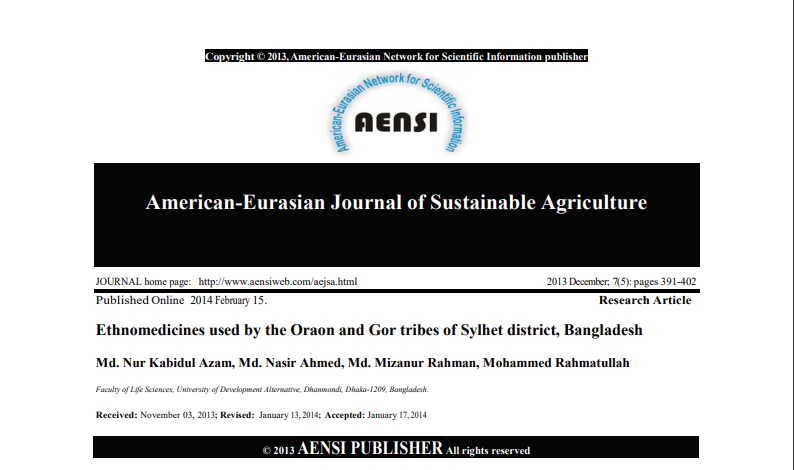Ethnomedicine use in Oraon and Gor tribes
The Oraon and the Gor tribe can be found in Sreemangal of Sylhet district in the northeastern region of Bangladesh. Both tribes have dwindled to an extent where tribe and tribal knowledge is on the verge of disappearance. Remnants of both tribes can be found in several villages with the tribal people engaged as tea workers in nearby tea estates. Since nothing has been reported about the traditional medicinal practices of the two tribes, the objective of the present study was to conduct an ethnomedicinal survey among the traditional healers of the two tribes. A total of five traditional healers were interviewed; four of them were from the Oraons and one from the Gors. A total of 74 medicinal plants with their uses were obtained from the tribal healers. Sixty five plants were obtained from the Oraon tribal healers and nine from the Gor traditional healers. The plants were distributed into 43 families. The ailments treated with the plants included loss of energy, respiratory tract disorders, gastrointestinal disorders, oral lesions, helminthiasis, sexual disorders, pain, blood purification, diabetes, snake bite, vomiting, fever, jaundice, wounds, paralysis, dog bite, loss of hair, skin disorders, spleen enlargement, arthritis, bone fracture, chicken pox, nerve stimulant, cancer, and to expedite delivery. Four plants had ethnoveterinary uses; a combination of Cuscuta reflexa and Clerodendrum viscosum was used for treatment of anthrax in cattle, while Ricinus communis as well as Litsea monopetala was used for treatment of cattle diarrhea. Major thrust areas for further scientific research include plants used for treatment of diabetes, cancer, anthrax, and paralysis. These are areas where human beings can benefit from discovery of novel drugs without major adverse effects and which can result in complete cure of the diseases.
Full text article available at:
http://www.aensiweb.net/AENSIWEB/aejsa/aejsa/2013/391-402.pdf


